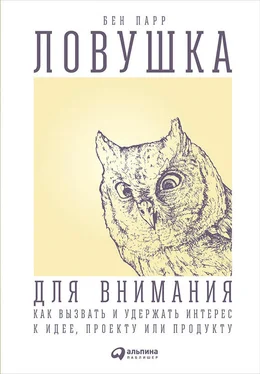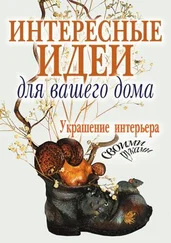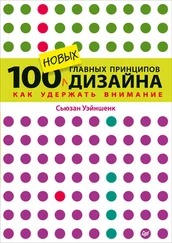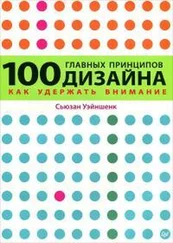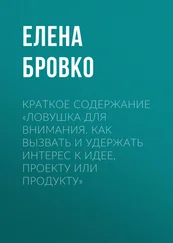Andrew Hampp and Jason Lipshutz, “Beyonce Unexpectedly Releases New Self-Titled ‘Visual Album’ on iTunes,” Billboard , December 13, 2013, http://www.billboard.com/articles/columns/the-juice/5827398/beyonce-unexpectedly-releases-new-self-titled-visual-album-on.
Bob Lefsetz, “Beyonce’s Album,” Lefsetz Letter blog, December 16, 2013, http://lefsetz.com/wordpress/index.php/archives/2013/12/16/beyonces-album/.
Nicholas Carlson, “Inside Pinterest: An Overnight Success Four Years in the Making,” Business Insider , May 1, 2012, http://www.businessinsider.com/inside-pinterest-an-overnight-success-four-years-in-the-making-2012–4.
Tom Cheshire, “In Depth: How Rovio Made Angry Birds a Winner (And What’s Next),” Wired , March 7, 2011, http://www.wired.co.uk/magazine/archive/2011/04/features/how-rovio-made-angry-birds-a-winner.
Суэллер, интервью с автором.
Jeff Ryan, Super Mario: How Nintendo Conquered America (New York: Penguin, 2011).
Julia Gögler et al., “Ménage À Trois – Two Endemic Species of Deceptive Orchids and One Pollinator Species,” Evolution 63, no. 9 (2009): 2222–34.
Daniela Niesta Kayser, Andrew J. Elliot, and Roger Feltman, “Red and Romantic Behavior in Men Viewing Women,” European Journal of Social Psychology 40, no. 6 (2010): 901–8.
J. A. Maga, “Influence of Color on Taste Thresholds,” Chemical Senses 1, no. 1 (1974): 115–19.
Yorzinski, Jessica L., Michael J. Penkunas, Michael L. Platt, and Richard G. Coss, “Dangerous Animals Capture and Maintain Attention in Humans,” Evolutionary Psychology 12, no. 3 (2014): 534–48.
R. Reed Hunt, “The Subtlety of Distinctiveness: What von Restorff Really Did,” Psychonomic Bulletin & Review 2, no. 1 (1995): 105–12.
Nicolas Guéguen, “Color and Women Hitchhikers’ Attractiveness: Gentlemen Drivers Prefer Red,” Color Research & Application 37, no. 1 (2012): 76–78.
Andrew J. Elliot and Daniela Niesta, “Romantic Red: Red Enhances Men’s Attraction to Women,” Journal of Personality and Social Psychology 95, no. 5 (2008): 1150–64.
Dan McGrady, “How We Improved Our Conversion Rate by 72 %,”Dmix blog, 2011, http://web.archive.org/web/20140413033138/http://dmix.ca/2010/05/how-we-increased-our-conversion-rate-by-72/.
“B2B Landing Page Optimization Lifts Lead Generation by 32.5 %–Within Strict Branding Guidelines,” WiderFunnel Marketing Conversion Optimization, http://www.widerfunnel.com/proof/case-studies/sap-landing-page-optimization (accessed September 12, 2014).
Hans-Peter Frey et al., “Beyond Correlation: Do Color Features Influence Attention in Rainforest?” Frontiers in Human Neuroscience 5 (2011): 36.
Roger T. Hanlon and John B. Messenger, “Adaptive Coloration in Young Cuttlefish ( Sepia officinalis L .): The Morphology and Development of Body Patterns and Their Relation to Behaviour,” Philosophical Transactions of the Royal Society of London , Series B, Biological Sciences 320, no. 1200 (1988): 437–87.
Mel White, “Why Birds Attacked the Peace Doves in Rome,” National Geographic , January 27, 2014, http://news.nationalgeographic.com/news/2014/01/140127-white-peace-doves-attacked-birds-rome-vatican-pope/.
Michael Aagaard, “How to Design Call to Action Buttons that Convert,” The Landing Page & Conversion Rate Optimization Blog , Unbounce, May 22, 2013, http://unbounce.com/conversion-rate-optimization/design-call-to-action-buttons/.
Adam L. Alter, “Colors,” in Drunk Tank Pink: And Other Unexpected Forces that Shape How We Think, Feel, and Behave (New York: Penguin, 2013).
N. Yoshioka, “[Epidemiological Study of Suicide in Japan – Is It Possible to Reduce Committing Suicide?]” Nihon Hoigaku Zasshi 52, no. 5 (1998): 286–93; Keith W. Jacobs and James F. Suess, “Effects of Four Psychological Primary Colors on Anxiety State,” Perceptual and Motor Skills 41, no. 1 (1975): 207–10; Robert E. Strong et al., “Narrow-Band Blue-Light Treatment of Seasonal Affective Disorder in Adults and the Influence of Additional Nonseasonal Symptoms,” Depression and Anxiety 26, no. 3 (2009): 273–78.
Cliff Kuang, “Infographic of the Day: What Colors Mean Across 10 Cultures,” Fast Company , April 26, 2010, http://www.fastcompany.com/1627581/infographic-day-what-colors-mean-across-10-cultures.
Patricia Valdez and Albert Mehrabian, “Effects of Color on Emotions,” Journal of Experimental Psychology: General 123, no. 4 (1994): 394–409.
Anton J. M. de Craen et al., “Effect of Colour of Drugs: Systematic Review of Perceived Effect of Drugs and of Their Effectiveness,” British Medical Journal 313, no. 7072 (1996): 1624–26.
Lauren I. Labrecque and George R. Milne, “Exciting Red and Competent Blue: The Importance of Color in Marketing,” Journal of the Academy of Marketing Science 40, no. 5 (2011): 711–27.
Mark Wilson, “Why the Security Bug Heartbleed Has a Catchy Logo,” Fast Company , April 11, 2014, http://www.fastcodesign.com/3028982/why-the-security-bug-heartbleed-has-a-catchy-logo.
Gráinne M. Fitzsimons, Tanya L. Chartrand, and Gavan J. Fitzsimons, “Automatic Effects of Brand Exposure on Motivated Behavior: How Apple Makes You ‘Think Different,’ ” Journal of Consumer Research 35, no. 1 (2008): 21–35.
Daniel Kahneman, “The Associative Machine,” in Thinking, Fast and Slow (New York: Farrar, Straus and Giroux, 2011), 50–58.
Bill Prady, Steven Molaro, and Jim Reynolds, “The Cohabitation Formulation,” The Big Bang Theory , season 4, episode 16, directed by Mark Cendrowski, aired February 17, 2011 (New York: CBS).
Lawrence E. Williams and John A. Bargh, “Experiencing Physical Warmth Promotes Interpersonal Warmth,” Science 322, no. 5901 (2008): 606–7.
Simon Storey and Lance Workman, “The Effects of Temperature Priming on Cooperation in the Iterated Prisoner’s Dilemma,” Evolutionary Psychology 11, no. 1 (2013): 52–67.
Chris Eccleston and Geert Crombez, “Pain Demands Attention: A Cognitive-Affective Model of the Interruptive Function of Pain,” Psychological Bulletin 125, no. 3 (1999): 356–66.
Judee K. Burgoon, “Relational Message Interpretations of Touch, Conversational Distance, and Posture,” Journal of Nonverbal Behavior 15, no. 4 (1991): 233–59; Glen P. Williams and Chris L. Kleinke, “Effects of Mutual Gaze and Touch on Attraction, Mood, and Cardiovascular Reactivity,” Journal of Research in Personality 27, no. 2 (1993): 170–83.
Читать дальше
Конец ознакомительного отрывка
Купить книгу
